This is the part of a series of posts examining how to create super-packed districts of one race. “The Whitest District of Them All, Part 2” can be found here.
The Challenge
The other posts in this series pack Asians, blacks, Hispanics, and Native Americans. All of these groups are minorities in the United States.
Whites, on the other hand, compose a majority of America’s population, numbering more than three out of every five Americans.
This makes creating the whitest district possible an extremely difficult task.
More below.
It is usually quite obvious where to look when attempting to create a district composed entirely of one minority. For Asians, one goes to the San Francisco Bay Area; for blacks, one goes to the South Side of Chicago, for Hispanics one goes to Miami and South Texas; for Native Americans one goes to Arizona.
Whites, however, are different. There are so many extremely white areas in the United States that it is impossible to determine, at first glance, which area is the whitest of all. One needs to go through tedious trial-and-error to find out.
Strategies
There are several guidelines to follow in trying to draw the whitest congressional district possible. Firstly, there are already some very white congressional districts out there. The state of Vermont is 95.3% white. Then there is Maine’s 1st congressional district, which is 96.8% white. That’s a good lower-bound number.
In drawing these districts, I tried to find all the precincts which were more than 98% white. I then linked the precincts together into one continguous district using the whitest precincts between them. This process led to some very strange-looking districts.
The whitest parts of America have several characteristics in common:
Geography – Anyplace within 1,500 miles of the Pacific Ocean is not white enough. Nor is any part of the former Confederacy.
There are several reasons for this. The states in the former Confederacy do have a lot of 98% white precincts. However, one quickly runs out of them and must then start taking in precincts with significant black populations. The problem is different in the Plains; these places are very white, but population is just too small altogether. One eventually is forced to take in minorities, because nobody lives in the 98% white areas of Nebraska or Idaho. Finally, in the Rocky Mountains and West Coast there are no 98% white areas at all; they are too integrated (Oregon, Utah) and/or the minority population is too high (California, Texas).
Rural America – The whitest parts of America are almost all rural. America’s cities and suburbs are always less white than its rural areas; I have not seen one exception to this rule so far. Indeed, it is extremely rare to find a 98% white precinct in any suburb or city at all. Perhaps only Buffalo, Cincinnati, Dayton, Pittsburgh, and St. Louis have 98% white precincts.
Stagnant/Hard-to-Reach – In addition, they tend to be out-of-the-way. These places are generally a fairly long drive from major cities or highways. Economically, the whitest parts of the United States tend to be fairly stagnant (or in decline); there is not much going on. Indeed, one of the surest ways to tell that a place is undergoing rapid economic growth is an exploding Hispanic population.
Republican – Whites lean Republican, and it’s not surprising that extremely white congressional districts vote Republican. There are some exceptions (e.g. New England), but most of these districts voted for Senator John McCain.
The Districts
I drew a lot of districts in the quest for the whitest district of them all. It wouldn’t do the difficulty of this task justice to just show one district. Rather, I will show the five whitest districts of all the ones that I drew. Numbers five and four will be in this post. The top three will be in the next one.
And…here they are:
#5: Indiana
Population – 97.8% white, 0.2% black, 1.0% Hispanic, 0.2% Asian, 0.2% Native American, 0.7% other.
Indiana takes fifth place, with a 97.8% white district. Here are some closer looks for more detail. Northern Indiana:
And here is southern Indiana:
This district weaves through rural Indiana to take in the whitest parts possible. It avoids the northwestern part of the state, which is slightly less white. Notice how the district forms enormous loops around the major cities and towns of Indiana where the minority population is greater.
Politically, this district would favor the Republican Party by a large margin. It gave Senator John McCain a healthy 60.0% of the vote; President Barack Obama took a mere 38.5%. Given that Mr. Obama overperformed tremendously in Indiana, a normal Democratic candidate would probably do even worse.
#4: Kentucky
Population – 98.0% white, 0.3% black, 0.7% Hispanic, 0.2% Asian, 0.1% Native American, 0.7% other
Kentucky, the heart of the Applachians, takes fourth place. It’s interesting how the “other” population is so relatively high in the district.
Here are some closer looks. West Kentucky:
And now East Kentucky:
This district actually looks somewhat compact. The core of its population is in the mountainous area bordering West Virginia. Indeed, that part of the country is the whitest part of the United States; unfortunately for redistricters, it’s divided into three states. The district then reaches several arms out to take some other very white parts of Kentucky to the west.
Politically, parts of this district were ancestrally Democratic; President Bill Clinton might have won it. Since then Appalachia’s white working class has shifted strongly Republican. I’ll take a wild guess and say that it went Republican in 2008.
#3, #2, and #1
The next post will deal with the three whitest districts in the United States. Try to guess which states they’re located in!
–inoljt
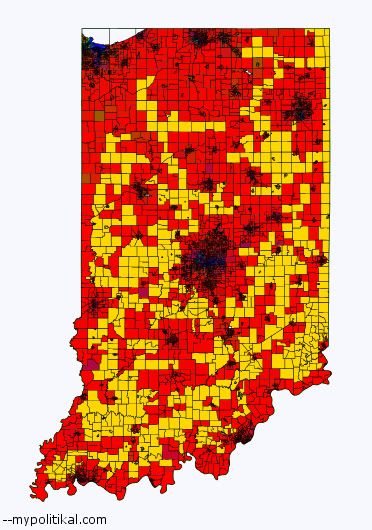
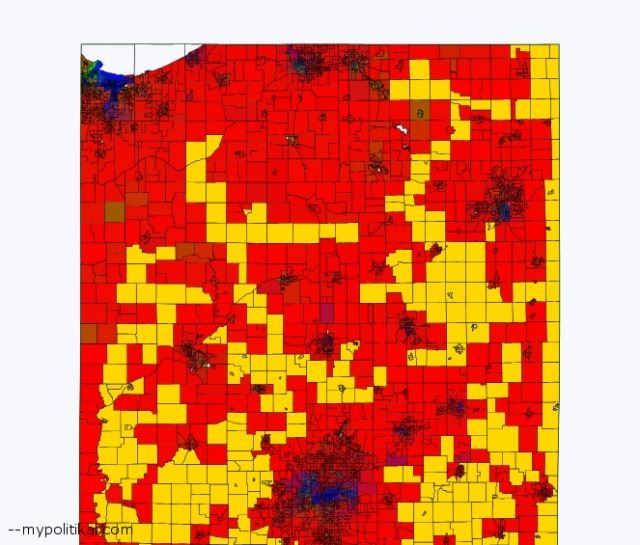
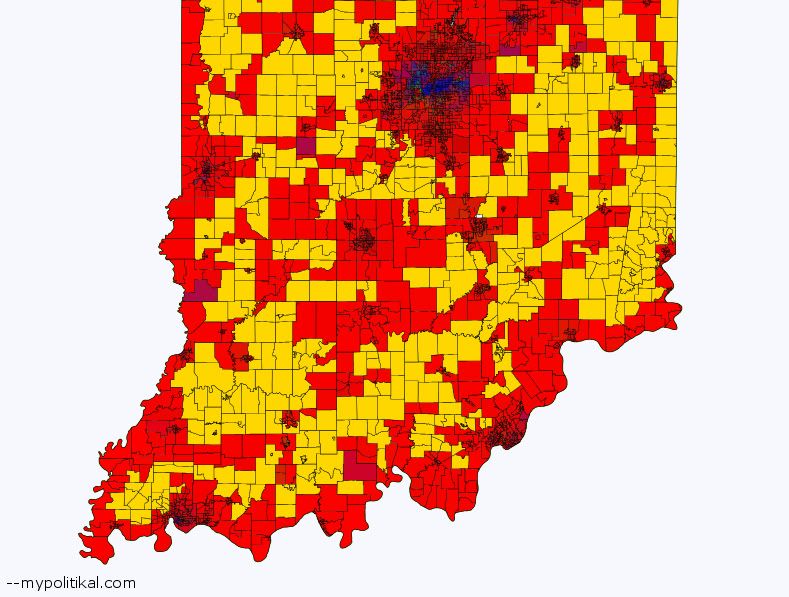

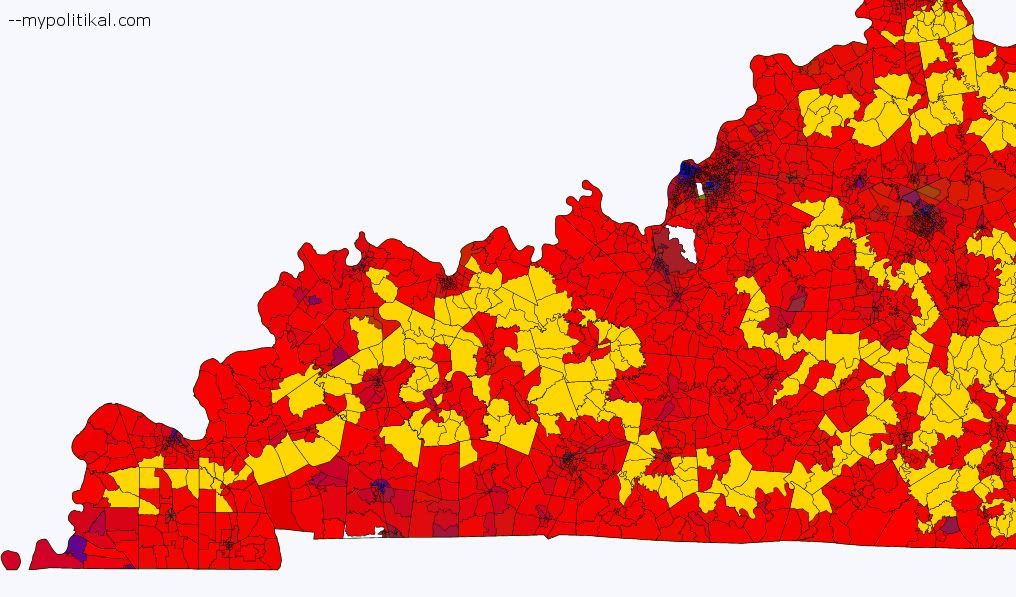
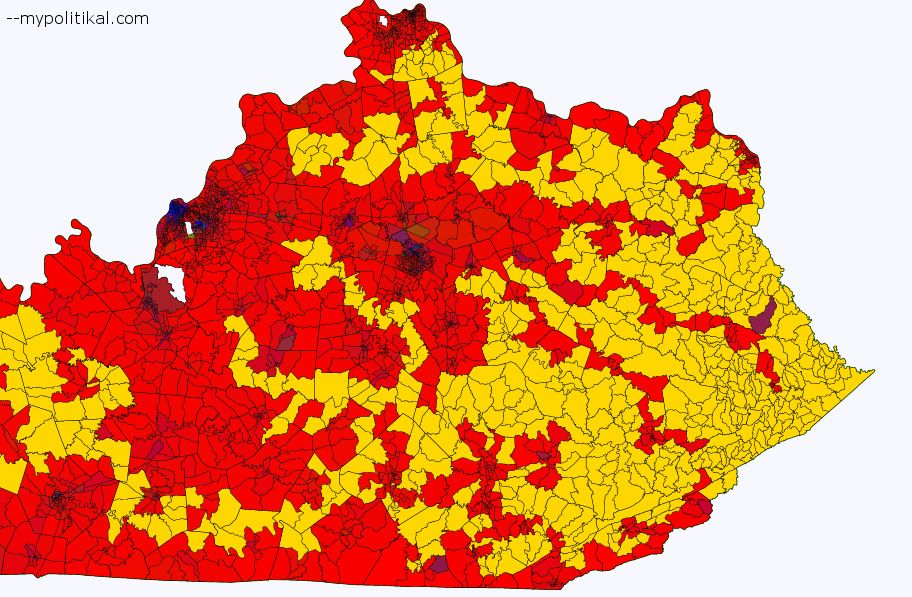
3 comments